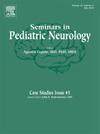Rehabilitation for pediatric stroke survivors can maximize a child's potential through each developmental stage of life. Timely diagnosis and referral to a rehabilitation specialist may harness opportunities to maximize brain plasticity, to help children adapt and learn, and to participate in and enjoy daily life to their capability. The aim of this focused review is to explore current rehabilitation models and evidence-based interventions for pediatric stroke survivors in Low- and Middle- Income Countries (LMICs) and to provide recommendations for future research and focused areas of improvement.There are several published pediatric stroke guidelines from the American Heart Association (AHA), Canada, Australia, and the United Kingdom (UK) which provide specific recommendations for rehabilitation, although the suggested intervention and services vary. There are no current guidelines developed in or contextually adapted for LMICs, although the current pediatric stroke guidelines emphasize the need to develop interventions that fit the cultural and environmental contexts. The World Health Organization (WHO) Rehabilitation 2030 initiative acknowledges profound unmet rehabilitation needs around the world, especially in LMICs. According to the WHO, LMICs have less than ten skilled rehabilitation professionals per one million people. Enhancing the understanding of rehabilitation services in LMICs could lead to nationally supported workforce education initiatives targeted to expand the number of locally trained therapy providers. This could improve access to and delivery of quality rehabilitation interventions to pediatric stroke survivors in these settings.


